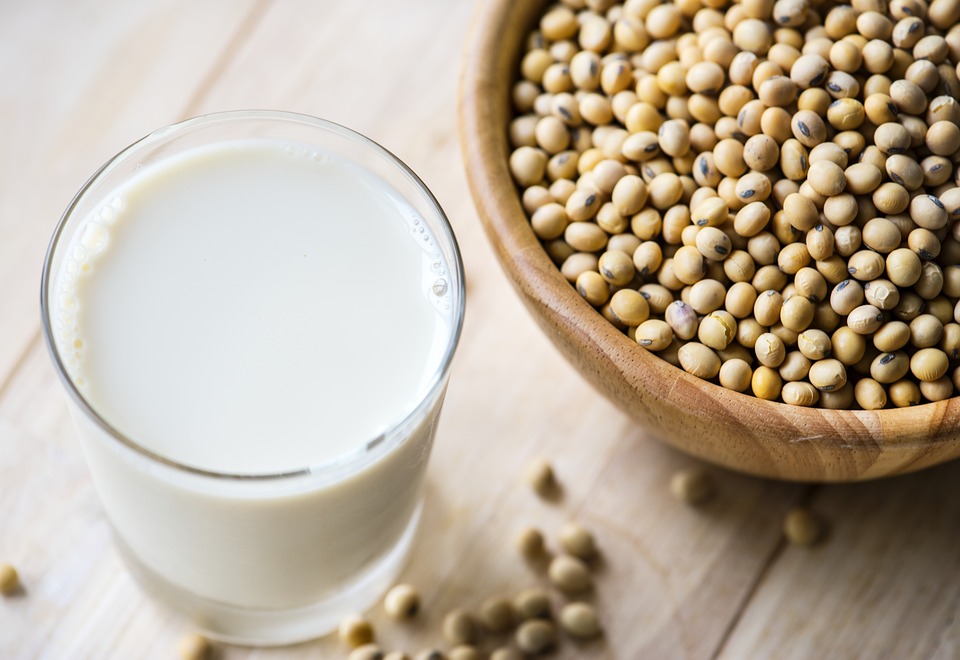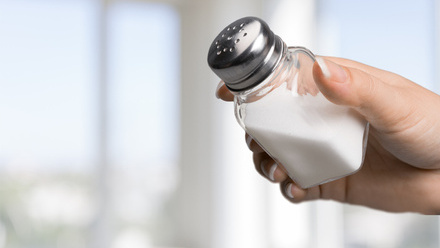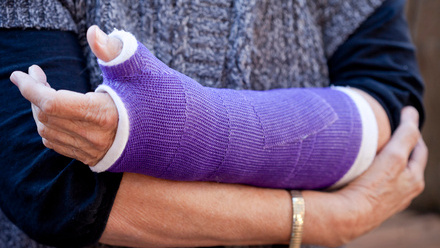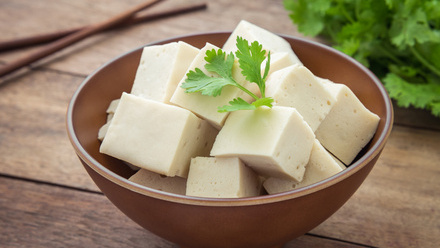Calcium is important at all ages for strong bones and teeth. This Food Fact Sheet lists how much calcium different people need, what foods and drinks are good sources, and how you can add it to your diet.
Why do I need calcium?
Calcium is a mineral that is needed to maintain strong bones. It is also needed for healthy muscle and nerve function.
How much calcium do I need?
Table 1 - Daily guideline amounts
|
Group |
Age (years) |
Calcium (mg) per day |
|
Infants |
Under 1 |
525 |
|
Children |
1-3 4-6 7-10 |
350 450 550 |
|
Adolescents |
11-18 |
800 (girls) 1000 (boys) |
|
Adults |
19+ |
700 |
|
Those who are breastfeeding |
|
1250 |
|
Coeliac Disease |
19+ |
1000-1500 |
|
Osteoporosis |
19+ |
700 (up to 1000 on osteoporosis drug treatments) |
|
Inflammatory Bowel disease (while taking corticosteroids)* |
19+ |
800-1000 |
* Discuss the need for a calcium supplement with your doctor or dietitian.
You are more at risk of calcium deficiency if you:
- are on a cow’s milk or lactose-free diet
- have coeliac disease
- have osteoporosis
- are breastfeeding
- are past the menopause
Limited evidence suggests that some older adults may benefit from higher intakes.

Where do I get calcium from?
|
Calcium in dairy products |
Quantity |
Calcium (mg) |
|
Cow’s milk, including Lactose free |
100ml |
120 |
|
Sheep’s milk |
100ml |
170 |
|
Goat’s milk |
100ml |
100-120 |
|
Cheese: Cheddar Edam/Halloumi Cottage |
matchbox-size: 30g 30g 30g |
222 238 38 |
|
Cheese triangle |
1 triangle (15-17.5g) |
84-138 |
|
Yoghurt (plain) |
120g |
181 (low fat) 193 (whole) |
|
Fromage frais |
1 pot (47-85g) |
80-128 |
|
Rice pudding or custard pots |
1 pot (55g) |
60 |
|
Malted milk drink |
25g serving in 200ml semi-skimmed milk |
444-800 |
|
Rice pudding |
½ large tin (200g) |
198 |
|
Custard - tinned |
1 serving (120ml) |
110-127 |
|
Milk chocolate |
30g |
68 |
|
Non dairy sources of calcium Calcium-fortified products |
||
|
Calcium-fortified plant-based alternatives to milk e.g. soya, oat, nut, coconut, pea, rice* drinks |
100 ml |
120-189 |
|
Soya bean curd/tofu (only if set with calcium chloride (E509) or calcium sulphate (E516), not nigari) |
100g (uncooked weight) |
350-400 |
|
Calcium-fortified soya, coconut or oat yoghurt and soya dessert or custard |
100g |
120-211 |
|
Calcium-fortified coconut cheese |
1 portion (30g) |
45-221 |
|
Calcium-fortified infant cereals |
1 serving (20g) |
120 |
|
Calcium-fortified cereals |
30g serving |
136-174 |
|
Calcium-fortified instant hot oat cereal |
1 tbsp dry cereal (15g) |
200 |
|
Calcium-fortified bread |
1 slice (37-50g) |
84-179 |
|
Sardines (with bones) (in tomato sauce, olive oil, brine) |
½ tin (60g) |
273-407 |
|
Pilchards (with bones) |
1 serving (60g) |
150 |
|
Tinned salmon (with bones) |
½ tin (106g) |
115 (pink) 174 (red) |
|
Whitebait |
1 small portion (50g) |
430 |
|
Scampi in breadcrumbs |
6 pieces (90g) |
90 |
|
White bread |
2 large slices (100g) |
155 |
|
Wholemeal bread |
2 large slices (100g) |
106 |
|
Pitta bread/chapatti |
1 portion (65g) |
90 |
|
Orange |
1 medium (120g) |
29 |
|
Broccoli, boiled |
2 spears (85g) |
36 |
|
Kale |
100g boiled |
150 |
|
Spring greens |
1 serving (75g) |
56 |
*Children under four and a half years old should not have rice drinks as a replacement for cow’s milk, breast milk or infant formula.
Calcium absorption
Spinach, dried fruits, beans, seeds and nuts contain calcium but they also contain oxalates and/or phytates which reduce how much calcium your body can absorb from them. They have therefore not been listed and you should not rely on them as your main sources of calcium.
Can I get enough calcium in a vegan diet?
Yes! There are lots of plant-based foods and drinks that contain calcium listed in the table above.
Many plant-based alternatives to dairy products in the UK are fortified with calcium (they have extra calcium added to them). Calcium-set tofu and calcium-fortified bread are good options to include as your main sources of calcium.
It is important to check that the products you are buying contain added calcium as many organic products, for example, are not fortified. Without added calcium, these foods and drinks do not have a noticeable amount of calcium.
Note that most plant-based alternatives to dairy, like rice, oat or nut drinks, contain less protein and calories than cow’s milk.
Meals and snack ideas
- Start the day with cereal (many are calcium-fortified) with milk (or a calcium-fortified milk plant-based alternative.
- Use tinned sardines or pilchards (with the bones) instead of tuna in a sandwich or on toast.
- Have a stir fry including calcium-set tofu, broccoli spears and chopped nuts.
- If your child will not drink milk, include milk and milk alternatives in meals and snacks instead.
- Add yoghurt (or a calcium-fortified plant-based alternative) to fruit as a pudding or use milk or a milk substitute (calcium-fortified) to make custard and milk puddings.
- Include foods containing dairy or a plant-based alternative e.g. lasagne, cheese on toast, pancakes, naan breads, scones.
- Try a glass of low-fat milk or a plant-based alternative as a snack or to help rehydrate after exercising.
Healthy lifestyle advice for healthy bones
- Be active - weight-bearing activities like walking, aerobics, cycling, running and tennis are best. Aim for at least 30 minutes of activity, five times a week.
- Smoking is associated with an increased risk of osteoporosis, low bone density and increased risk of hip fracture. Stopping smoking prevents further excess bone loss.
Vitamin D and calcium
Vitamin D helps the absorption of calcium from foods. For more information about how to meet your requirements see our Vitamin D fact sheet.
Calcium supplements
It is best to get enough calcium from food. If you are unable to meet your daily requirements from food alone, you can take supplements to top up your intake. If you are taking medicines, other supplement products, or if you think you need more than 500mg of extra calcium; it advisable to discuss this with a pharmacist, doctor or dietitian.
Top tips
- Getting enough calcium is important for healthy bones and teeth & muscle and nerve function.
- You need Vitamin D to absorb the calcium in your diet.
- Don’t forget, low-fat dairy products have the same amount of calcium as the full-fat versions.
- Remember to check plant-based alternatives to dairy have added calcium (often called ‘fortified’). Most organic products are not calcium-fortified.
- Most people can get enough calcium from a varied and nutritious diet, but there are supplements available if this is difficult for you.
Source(s)
Beyer FR, Dickinson HO, Nicolson D, Ford GA, Mason J. Combined calcium, magnesium and potassium supplementation for the management of primary hypertension in adults. Cochrane Database of Systematic Reviews 2006, Issue 3. Art. No.: CD004805. DOI: 10.1002/14651858.CD004805.pub2.
British Association of Dermatologists, Cancer Research UK, Diabetes UK, the Multiple Sclerosis Society, the National Heart Forum, the National Osteoporosis Society and the Primary Care Dermatology Society. (2010) Consensus Vitamin D position statement [online] Available at: www.bad.org.uk/for-the-public/skin-cancer/vitamin-d/vitamin-d-consensus-2010 [Accessed 30.3.21]
British Society of Gastroenterology (2014) The Management of Adults with Coeliac Disease [online] Available at: www.bsg.org.uk/wp-content/uploads/2019/12/BSG-guidelines-on-the-diagnosis-and-management-of-adult-coeliac-disease.pdf [Accessed 30.3.21]
Buppasiri P, Lumbiganon P, Thinkhamrop J, Ngamjarus C, Laopaiboon M. Calcium supplementation (other than for preventing or treating hypertension) for improving pregnancy and infant outcomes. Cochrane Database of Systematic Reviews 2011, Issue 10. Art. No.: CD007079. DOI: 10.1002/14651858.CD007079.pub2.
Calcium content of products sourced from product manufacturer websites 2021 and McCance and Widdowson (2015) McCance and Widdowson's composition of foods integrated dataset. Available at: www.gov.uk/government/publications/composition-of-foods-integrated-dataset-cofid [Accessed 30.3.21]
Coeliac UK (2017) Calcium – are you getting enough? [online] Available at: www.coeliac.org.uk/document-library/141-a-guide-to-calcium/ [Accessed 30.3.21]
Department of Health and Social Care (2019). Physical activity guidelines: UK Chief Medical Officers' report. Available at:
https://assets.publishing.service.gov.uk/government/uploads/system/uploads/attachment_data/file/832868/uk-chief-medical-officers-physical-activity-guidelines.pdf [Accessed 29.3.21]
Department of Health (1991) Dietary reference values for food energy and nutrients for the United Kingdom London: HMSO
Dickinson HO, Nicolson D, Cook JV, Campbell F, Beyer FR, Ford GA, Mason J. Calcium supplementation for the management of primary hypertension in adults. Cochrane Database of Systematic Reviews 2006, Issue 2. Art. No.: CD004639. DOI: 10.1002/14651858.CD004639.pub2.
Food Standards Agency (2018). Arsenic in rice. https://www.food.gov.uk/safety-hygiene/arsenic-in-rice?navref=search-global-all-1 [Accessed 30.3.21]
Healthy Start (2011). Healthy Start vitamins and why you need them. [Accessed 30.3.21]
Hofmeyr GJ, Lawrie TA, Atallah ÁN, Duley L. Calcium supplementation during pregnancy for preventing hypertensive disorders and related problems. Cochrane Database of Systematic Reviews 2010, Issue 8. Art. No.: CD001059. DOI: 10.1002/14651858.CD001059.pub3.
Hofmeyr GJ, Lawrie TA, Atallah ÁN, Torloni MR. Calcium supplementation during pregnancy for preventing hypertensive disorders and related problems. Cochrane Database of Systematic Reviews 2018, Issue 10. Art. No.: CD001059. DOI: 10.1002/14651858.CD001059.pub5.
https://www.ncbi.nlm.nih.gov/pmc/articles/PMC6517256/pdf/CD001059.pdf [Accessed 30.3.21]
Homik J, Suarez-Almazor ME, Shea B, Cranney A, Wells GA, Tugwell P. Calcium and vitamin D for corticosteroid-induced osteoporosis. Cochrane Database of Systematic Reviews 1998, Issue 2. Art. No.: CD000952. DOI: 10.1002/14651858.CD000952.
Kuschel CA, Harding JE, Kumaran VS. Calcium and phosphorus supplementation of human milk for preterm infants. Cochrane Database of Systematic Reviews 2001, Issue 4. Art. No.: CD003310. DOI: 10.1002/14651858.CD003310.
Lamb, C. A., Kennedy, N. A., Raine, T., Hendy, P. A., Smith, P. J., Limdi, J. K., Hayee, B., Lomer, M. C. E., Parkes, G. C., Selinger, C., et al. (2019) British Society of Gastroenterology consensus guidelines on the management of inflammatory bowel disease in adults. Gut, 68(Suppl 3), pp. s1-s106. [Accessed 30.3.21]
Law, M.R. and Hackshaw, A.K. A meta-analysis of cigarette smoking, bone mineral density and risk of hip fracture: recognition of a major effect. BMJ 1997;315:841
Li, K., Wang, X. F., Li, D. Y., Chen, Y. C., Zhao, L. J., Liu, X. G., Guo, Y. F., Shen, J., Lin, X., Deng, J., et al. (2018) The good, the bad, and the ugly of calcium supplementation: a review of calcium intake on human health. Clin Interv Aging, 13, pp. 2443-2452.
National Osteoporosis Guideline Group(2017, updated 2019). https://www.sheffield.ac.uk/NOGG/mainrecommendations.html
NHS Choices (2020). Vitamin D. https://www.nhs.uk/conditions/vitamins-and-minerals/vitamin-d/ [Accessed 30.3.21]
NHS Choices (2019). Exercise. https://www.nhs.uk/live-well/exercise/ [Accessed 29.3.21]
NHS Choices (2019). Osteoporosis. https://www.nhs.uk/conditions/osteoporosis/ [Accessed 30.3.21]
NHS Choices (2013) How to get vitamin D from sunlight [online] Available at: www.nhs.uk/Livewell/Summerhealth/Pages/vitamin-D-sunlight.aspx [Accessed 05.5.14]
North American Menopause Society (2006) Position Statement The role of calcium in peri- and postmenopausal women [online] Available at: www.menopause.org/docs/default-document-library/pscalcium06.pdf?sfvrsn=2 [Accessed 04.11.13]
Phillips, S. M. Effects of Drinking Milk Following Exercise [online] Available at: www.dairynutrition.ca/scientific-evidence/experts-summaries/effects-of-drinking-milk-following-exercise [Accessed 30.3.21]
Public Health Agency (2020). Vitamin D and You. https://www.publichealth.hscni.net/sites/default/files/2020-04/VitaminD_leaflet%2001%2020.pdf [Accessed 29.3.21]
Reid, I. R. and Bolland, M. J. (2020) Calcium and/or Vitamin D Supplementation for the Prevention of Fragility Fractures: Who Needs It? Nutrients, 12(4).
Rex, D and Nelson, A. (2017) Sugar Food Fact Sheet. [online] Available at: www.bda.uk.com/foodfacts/sugar.pdf [Accessed 30.3.2021]
Roy, B.D. Milk the new sports drink. A Review. Journal of the International Society of Sports Nutrition 2008, 5:15
Royal Osteoporosis Society. Nutrition for bones/calcium. https://theros.org.uk/information-and-support/bone-health/nutrition-for-bones/ [Accessed 30.3.2021]
SACN (2016) SACN vitamin D and health report [online] Available at: https://www.gov.uk/government/publications/sacn-vitamin-d-and-health-report [Accessed 31.3.21]
SACN statement on nutrition and older adults living in the community (2021). https://assets.publishing.service.gov.uk/government/uploads/system/uploads/attachment_data/file/953911/SACN_Nutrition_and_older_adults.pdf
Shirreffs, S.M., Watson, P., and Maughan, R.J. Milk as an effective post exercise rehydration drink. British Journal of Nutrition (2007), 98, 173-180.
Scottish Intercollegiate Guidelines Network (2003) Management of Osteoporosis Guideline and the prevention of fragility fractures SIGN 142. March 2015, Revised 2020. https://www.sign.ac.uk/media/1741/sign142.pdf [Accessed 30.3.2021]
Weingarten, MAMA., Zalmanovici Trestioreanu, A. and Yaphe, J. Dietary calcium supplementation for preventing colorectal cancer and adenomatous polyps. Cochrane Database of Systematic Reviews 2008, Issue 1. Art. No.: CD003548. DOI: 10.1002/14651858.CD003548.pub4.
Winzenberg TM, Shaw KA, Fryer J, Jones G. Calcium supplementation for improving bone mineral density in children. Cochrane Database of Systematic Reviews 2006, Issue 2. Art. No.: CD005119. DOI: 10.1002/14651858.CD005119.pub2.
Weaver CM, Proulx WR, Heaney R. Choices for achieving adequate dietary calcium with a vegetarian diet.Am J Clin Nutr 1999 70 (3) 543S-548S.
Weaver CM, Plawecki KL. Dietary calcium: adequacy of a vegetarian diet. Am J Clin Nutr. 1994; 59: 1238S-1241S.







